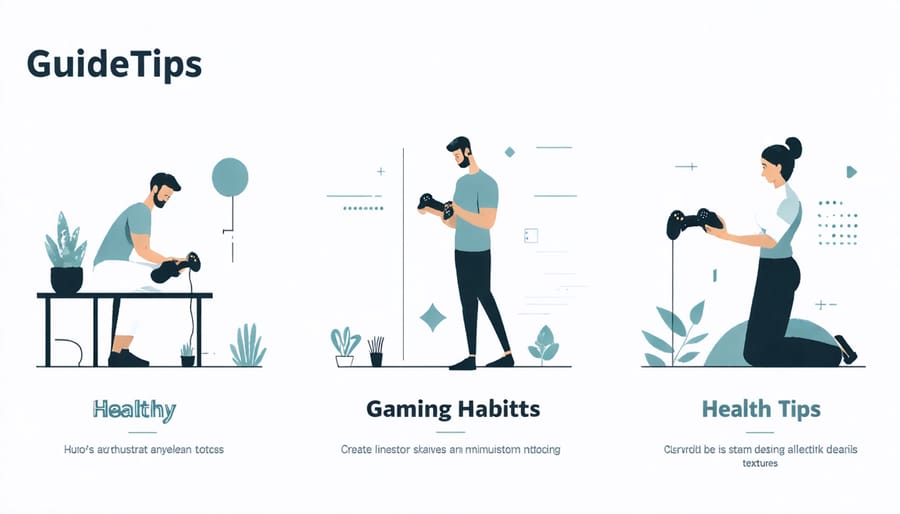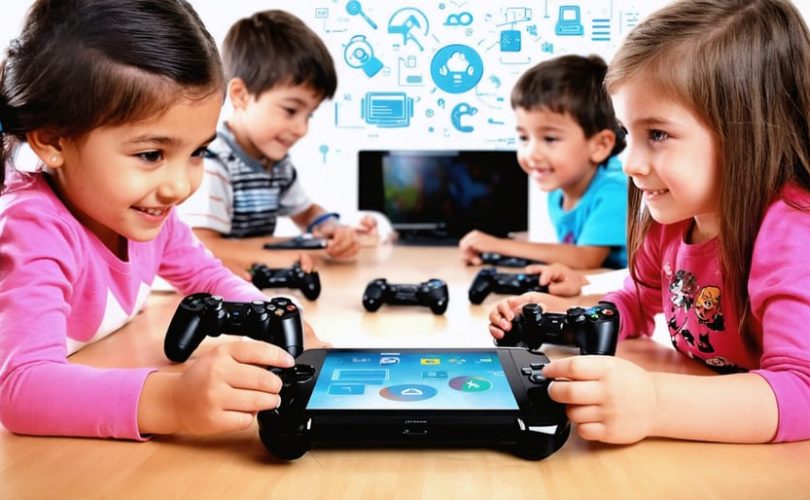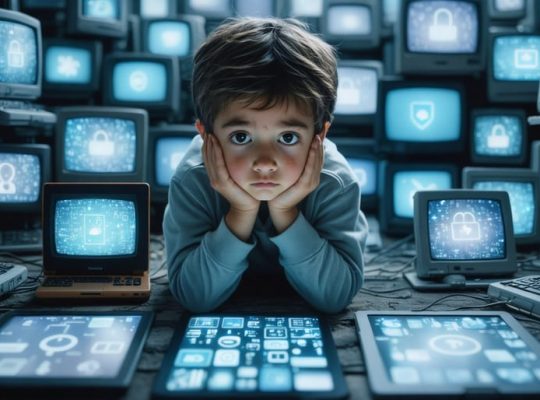Digital citizenship shapes how our children navigate, interact, and thrive in an increasingly connected world. As gaming becomes a central part of young people’s digital lives, understanding the nine core themes of digital citizenship – from digital access and literacy to security and wellbeing – has never been more crucial for parents and educators.
Today’s children aren’t just playing games; they’re building relationships, developing digital identities, and learning essential life skills in virtual spaces. Through gaming, they encounter real opportunities to practice digital etiquette, understand online safety, engage in digital commerce, and exercise their rights and responsibilities as digital citizens. Yet many adults feel uncertain about how to guide young people through these complex digital landscapes.
This comprehensive guide explores how gaming intersects with all nine elements of digital citizenship, offering practical strategies to help children become responsible, ethical, and empowered digital citizens. Whether your child is just starting their gaming journey or is already deeply immersed in digital worlds, understanding these themes will help you foster positive online experiences while protecting their digital wellbeing and security.
Let’s explore how gaming can become a powerful tool for teaching digital citizenship, turning everyday play into valuable learning opportunities for the digital age.
Digital Access and Gaming

Equal Gaming Opportunities
Gaming should be an inclusive experience available to all children, regardless of their background or circumstances. Unfortunately, many young gamers face barriers to participation, from limited internet access to financial constraints preventing them from accessing popular games and platforms. Parents and educators can help bridge these gaps by advocating for gaming programs in schools and community centers, sharing gaming resources, and supporting initiatives that provide gaming equipment to underserved communities. Consider organizing gaming clubs where children can share devices and play together, or exploring free-to-play alternatives to expensive games. Creating equal gaming opportunities isn’t just about access to technology – it’s about ensuring every child can participate in this important aspect of modern digital culture and social interaction. When we work together to make gaming more accessible, we help build a more inclusive digital community for all children.
Digital Commerce in Gaming
Teaching Financial Literacy Through Gaming
Games offer an engaging way for children to learn about money management and digital transactions in a safe environment. Many popular games include virtual currencies, in-game purchases, and trading systems that mirror real-world financial interactions. Through gaming, children can practice budgeting their virtual resources, understand the value of digital goods, and learn about responsible spending habits.
Parents can use gaming experiences to start conversations about real money, digital purchases, and online financial safety. When children manage their game currencies or make decisions about in-game purchases, they’re developing critical thinking skills about financial choices. This hands-on experience helps them understand concepts like saving, spending limits, and the difference between wants and needs.
Remember to supervise these learning opportunities and discuss the connection between virtual and real-world finances to help children develop healthy money management habits.
Digital Communication and Gaming Communities
Safe Communication Practices
Online communication requires thoughtful consideration of how our words and actions affect others. Teaching children to communicate respectfully and safely online starts with emphasizing the permanence of digital messages. Encourage young people to pause before posting and ask themselves: “Would I be comfortable if my family saw this?” or “Could this message hurt someone’s feelings?”
Parents and educators can model positive online behavior by demonstrating kindness in their own digital interactions. This includes using appropriate language, respecting others’ privacy, and avoiding sharing sensitive personal information. Help children understand that tone can be easily misinterpreted in text-based communication, and teach them to use clear, respectful language.
Remember that safe communication also means knowing when to step away from online conversations that become uncomfortable or hostile. Empower children to trust their instincts and seek adult help when needed.

Digital Literacy in Gaming Environments
Critical Thinking and Game Content
Games offer unique opportunities for children to develop critical thinking and media analysis skills. When playing, children learn to evaluate in-game information, distinguish between fact and fiction, and make thoughtful decisions about content they encounter. Parents can encourage this development by discussing game storylines, helping children understand advertising within games, and exploring how different perspectives are represented in gaming content. Through guided conversations about game choices and content, children become more discerning digital citizens who can better assess the media they consume. This analytical mindset extends beyond gaming, helping them navigate other digital spaces with greater awareness and understanding.
Digital Etiquette in Gaming
Addressing Toxic Gaming Behavior
Gaming communities can sometimes expose children to toxic online behavior, but there are effective ways to handle these situations. Encourage children to mute or block hostile players, and teach them to report serious incidents to game moderators. Help them understand that they don’t need to engage with negativity – walking away is often the best response. Create open dialogue about their gaming experiences and role-play positive responses to challenging situations. Setting up private gaming sessions with trusted friends can also provide a safer space for enjoyable play. Most importantly, remind children that someone else’s poor behavior reflects on that person, not on them, and that maintaining their own positive attitude contributes to a better gaming environment for everyone.
Digital Law and Gaming Rights
Gaming comes with its own set of legal rights and responsibilities that both children and parents need to understand. When your child downloads a new game or joins an online gaming platform, they’re entering into a legal agreement – even if they don’t realize it. These Terms of Service (ToS) agreements outline what players can and cannot do within the game, how their personal information will be used, and what rights they have as users.
Help your child understand that buying in-game items costs real money and requires parental permission if they’re underage. Discuss the importance of respecting intellectual property rights – this includes not using cheats or hacks that violate game terms, and not stealing other players’ virtual items or accounts.
Parents should also be aware of age ratings and content warnings for games. These aren’t just suggestions – they’re often legally binding guidelines designed to protect children from inappropriate content. Take time to review privacy settings together and explain why sharing personal information in gaming environments can be risky.
Remember, being a good digital citizen in gaming means following the rules, respecting others’ rights, and understanding the real-world consequences of virtual actions.
Digital Rights and Responsibilities
Gaming comes with both exciting privileges and important responsibilities. Just as we teach children about rights and responsibilities in the real world, the digital gaming space requires similar guidance. Children have the right to enjoy age-appropriate games, connect with friends, and express themselves creatively. However, these rights come paired with responsibilities like respecting other players, following game rules, and maintaining healthy gaming habits.
Parents can help children understand this balance by creating clear guidelines together. For example, earning gaming time by completing homework or chores teaches that digital privileges are connected to real-world responsibilities. Similarly, emphasizing good sportsmanship in multiplayer games helps children understand that their online behavior affects real people.
Encourage children to be responsible digital citizens by reporting inappropriate behavior, protecting their personal information, and being mindful of their screen time. When children understand both their gaming rights and responsibilities, they’re better equipped to navigate the digital world safely and respectfully.
Digital Health and Wellness in Gaming
Gaming can be a wonderful source of entertainment and social connection, but finding the right balance is crucial for our children’s wellbeing. Understanding the impact of excessive gaming helps us make informed decisions about healthy play habits.
Encourage regular breaks using the 20-20-20 rule: every 20 minutes, look at something 20 feet away for 20 seconds. This simple practice helps reduce eye strain and promotes better posture. Set up gaming stations with proper lighting and ergonomic seating to protect physical health.
Mental wellness matters too. Help children recognize when gaming might be affecting their mood, sleep, or relationships. Creating a balanced schedule that includes outdoor activities, face-to-face social interactions, and other hobbies is essential for maintaining digital wellness.
Remember, it’s not about completely avoiding games, but rather fostering a healthy relationship with technology. Celebrate positive gaming experiences while teaching children to listen to their bodies and minds when they need a break.

Digital Security in Gaming
Gaming environments require special attention to digital security, as they often involve personal information and financial transactions. Parents should help children understand the importance of strong, unique passwords for their gaming accounts and teach them never to share account credentials, even with friends. When creating gaming profiles, guide your children to use nicknames instead of real names and avoid sharing personal details in chat features.
It’s crucial to familiarize yourself with the online safety guidelines of each gaming platform your child uses. Enable two-factor authentication when available, and regularly review privacy settings together. Teach children to be cautious about in-game purchases and never save payment information on shared devices.
Watch out for potential scams, such as fake game downloads or promises of free in-game currency. Encourage open communication about any suspicious messages or uncomfortable interactions they encounter while gaming. Remember, teaching digital security isn’t about creating fear but empowering children to make safe choices while enjoying their gaming experiences.
As we’ve explored the nine themes of digital citizenship, it’s clear that gaming provides unique opportunities for children to develop these essential skills. Parents play a crucial role in guiding their children through this digital landscape. Start by having open conversations about online behavior and setting clear expectations for gaming activities. Create a family media agreement that addresses digital access, communication, and security.
Make digital citizenship education a regular part of your family routine. Join your children in their gaming experiences occasionally, using these moments to discuss online etiquette and responsibility. Help them understand the importance of protecting personal information and maintaining a positive digital footprint while gaming.
Remember that teaching digital citizenship is an ongoing process. Stay informed about the games your children play and the online communities they participate in. Celebrate their positive digital behaviors and use mistakes as learning opportunities. By actively supporting your children’s development of these nine digital citizenship themes, you’re helping them become responsible, empathetic, and capable digital citizens who can navigate both gaming environments and the broader digital world with confidence and wisdom.
Together, we can help our children thrive in their digital lives while maintaining their safety, wellbeing, and positive relationships both online and offline.







